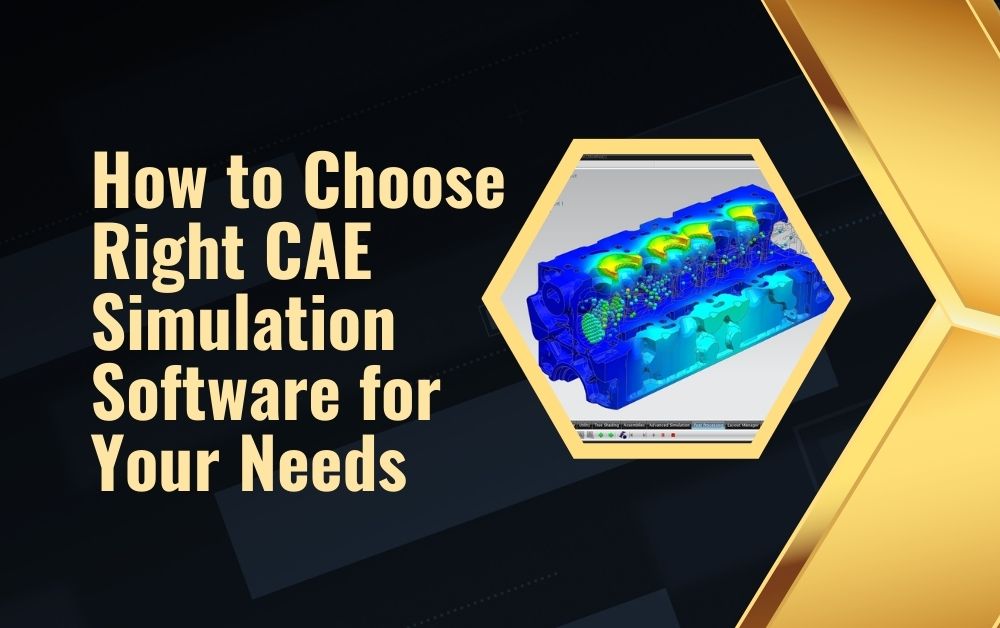
Choosing the right CAE (Computer-Aided Engineering) simulation software is a crucial decision that can significantly impact your engineering projects. With so many options available, it can be overwhelming to determine which software will best meet your specific needs. This guide will walk you through the key factors to consider, helping you make an informed choice.
Understanding CAE Simulation Software
What is CAE Simulation Software?
CAE simulation software is a tool used by engineers to analyze and predict the behavior of products under various conditions. It helps in evaluating the performance, durability, and safety of designs before they are built. This software uses mathematical models and algorithms to simulate real-world conditions, allowing engineers to make data-driven decisions.
Why is CAE Simulation Important?
CAE simulation is important because it reduces the need for physical prototypes, saving time and money. It also allows for more accurate predictions of how a product will perform in the real world. By using CAE simulation, engineers can identify potential issues early in the design process, leading to better and more reliable products.
Note – Ready to elevate your engineering projects with cutting-edge CAE simulation software? Discover how DDSPLM’s solutions can transform your design process and enhance your analysis capabilities. Explore our range of CAE simulation tools and find the perfect fit for your needs.
Key Factors to Consider When Choosing CAE Simulation Software
1. Understand Your Needs
Before selecting CAE simulation software, it’s essential to clearly understand your needs. What types of simulations will you be running? Are you focused on structural analysis, fluid dynamics, thermal analysis, or something else? Different software excels in different areas, so it’s crucial to match your needs with the software’s capabilities.
For instance, if you frequently work on complex structural analysis, you might need software with advanced capabilities in that area. On the other hand, if your work involves fluid dynamics or thermal analysis, you’ll want software that specializes in those fields.
2. Evaluate Software Features
Once you have a clear understanding of your needs, evaluate the features offered by different CAE simulation software. Look for software that provides the specific analysis types you require. Features to consider include:
- User Interface: A user-friendly interface can make a significant difference in productivity. Look for software with intuitive navigation and easy-to-use tools.
- Mesh Generation: Efficient mesh generation capabilities are crucial for accurate simulations. Ensure the software can handle complex geometries and provides good control over mesh quality.
- Solver Capabilities: The solver is the core of the simulation process. Check if the software uses advanced solvers that can handle large-scale problems efficiently.
3. Consider Integration with Other Tools
Many engineering projects require the use of multiple software tools. Check if the CAE simulation software integrates well with other tools you use, such as CAD (Computer-Aided Design) software or project management systems. Seamless integration can streamline your workflow and reduce the risk of errors.
For example, if you use CAD software for design, you’ll want a CAE simulation tool that can easily import and work with CAD files. This integration can save time and ensure consistency across different stages of your project.
4. Assess Software Performance
Performance is a critical factor when choosing CAE simulation software. Software that performs well will process simulations faster and handle larger models with ease. Look for benchmarks or performance reviews to gauge how well the software performs under various conditions.
Consider factors such as:
- Processing Speed: How quickly can the software run simulations? Faster processing speeds can significantly reduce the time needed for each analysis.
- Scalability: Can the software handle large and complex models? Ensure that it can scale according to your project requirements.
5. Check for Support and Training
Good customer support and training resources can make a big difference in how effectively you can use the software. Check if the software provider offers comprehensive support, including:
- Technical Support: Reliable support for troubleshooting issues or resolving technical problems.
- Training Resources: Access to training materials, tutorials, and documentation to help you learn how to use the software effectively.
6. Review Costs and Licensing Options
Cost is an important consideration, but it should be balanced with the value the software provides. Look at the total cost of ownership, including:
- Initial Purchase Cost: The upfront cost of buying the software.
- Maintenance and Upgrades: Ongoing costs for software updates and maintenance.
- Licensing Models: Different software may offer various licensing models, such as perpetual licenses, subscription-based licenses, or floating licenses. Choose the model that best fits your budget and usage patterns.
7. Consider User Reviews and Feedback
Research user reviews and feedback to gain insights into the experiences of others who have used the software. User reviews can provide valuable information about the software’s strengths and weaknesses, helping you make a more informed decision.
Look for reviews from users with similar needs and project types to ensure that their experiences are relevant to your situation.
8. Test the Software
Most CAE simulation software providers offer trial versions or demos. Take advantage of these opportunities to test the software before making a final decision. Testing the software allows you to evaluate its performance, features, and usability in a real-world setting.
During the trial period, focus on:
- Ease of Use: How intuitive is the software? Can you easily perform the simulations you need?
- Feature Set: Are the features you require available and functioning as expected?
Conclusion
Choosing the right CAE simulation software requires careful consideration of various factors, including your specific needs, software features, integration capabilities, performance, support, costs, and user feedback. By taking the time to evaluate these aspects, you can select a software solution that will enhance your engineering projects and contribute to successful outcomes. Remember, the right CAE simulation software is not just about having the latest features but finding a tool that aligns with your workflow and project requirements.
For more insightful articles related to this topic, feel free to visit smallbizblog.net